Bio 106: DNA Structure & Replication
1/63
There's no tags or description
Looks like no tags are added yet.
Name | Mastery | Learn | Test | Matching | Spaced |
|---|
No study sessions yet.
64 Terms
5 important features of hereditary material
stability (does not break down in cells)
storage of hereditary info
expression of different traits of cells & multicellular organisms
transferred at high fidelity to offspring
mutable (capable of changing/evolving in ways that allow for modification of existing traits, appearance of new traits)
biological 'contender' molecules for hereditary material
nucelic acid (polymer of just 4 types of nucelotides)
protein (polymers of at least 20 types of amino acids)
carbohydrate (mostly polymers of a single sugar, glucose)
lipids (more complex, glycerol + fatty acids + some sterols)
DNA molecule type
nucleic acid polymer
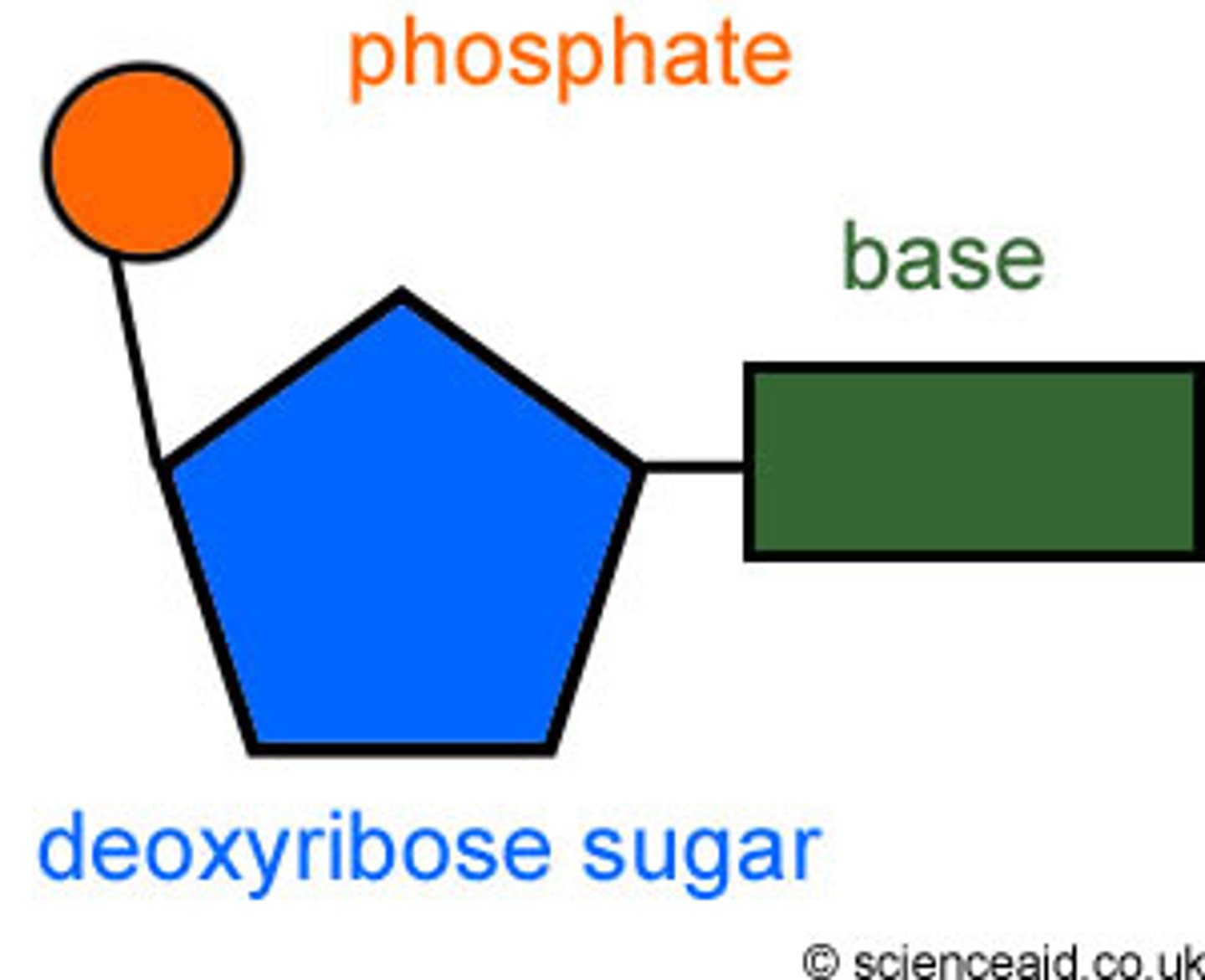
first to identify DNA as "transforming principle" (substance that could change phenotype of other cells)
Avery, MacLeod, McCarty (early 1940s)
__ confirmed DNA as hereditary material of bacteriophages (viruses that infect bacteria)
Hershey & Chase (early 1950s)
key discoveries that helped solve structure of DNA
chemistry of nucleotides (phosphate, deoxyribose sugar, base)
Erwin Chargaff's Rule: DNA composition same across of different organisms (T=A, C=G)
Rosalind Franklin x-ray diffraction data on DNA helix
nucleotides
Basic units of DNA molecule, composed of a sugar, a phosphate, and one of 4 DNA bases; the monomers that make up complex polymers called nucleic acid
__ discovered that percentage of adenine & thymine and guanine & cytosine were all about the same between species
Erwin Chargaff (1952)
Chargaff's Rule
A=T and C=G (base pairing)
__ proposed DNA as a triple helix (no experimental evidence)
Linus Pauling
___ used x-ray crystallography to take a picture of double-stranded DNA molecule; discovered repeating helix structure of DNA and measured dimensions
Rosalind Franklin & Maurice Wilkins (early 1950s)
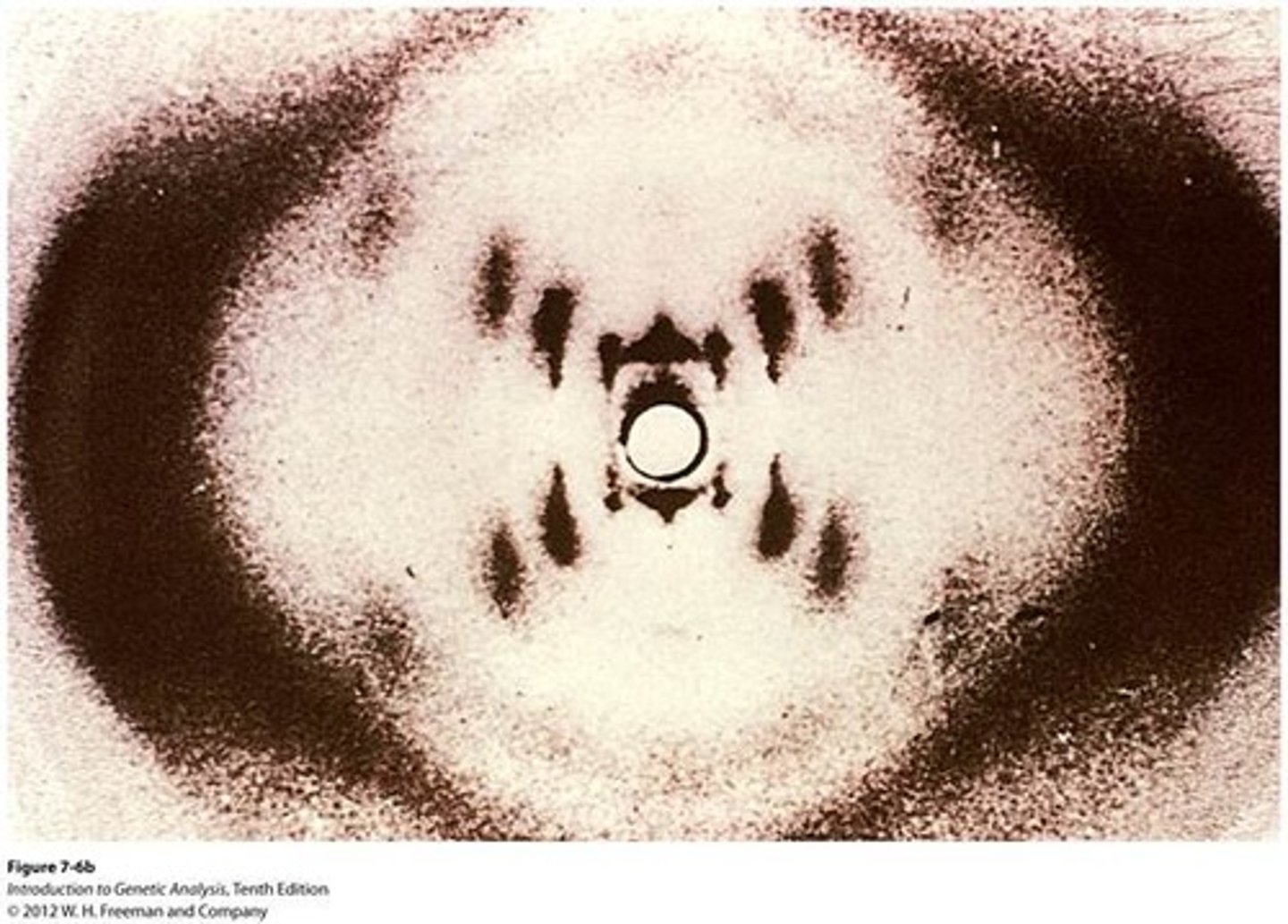
__ used data from other scientists and solved secret of structure of DNA by building models
Watson & Crick (1953)
4 kinds of nucleotides in DNA
adenine, guanine, thymine, cytosine
purines
big (nitrogenous) bases
pyrimidines
small (nitrogenous) bases
purine nucleotides
Adenine and Guanine (2 rings)
pyrimidine nucelotides
thymine and cytosine (1 ring?)
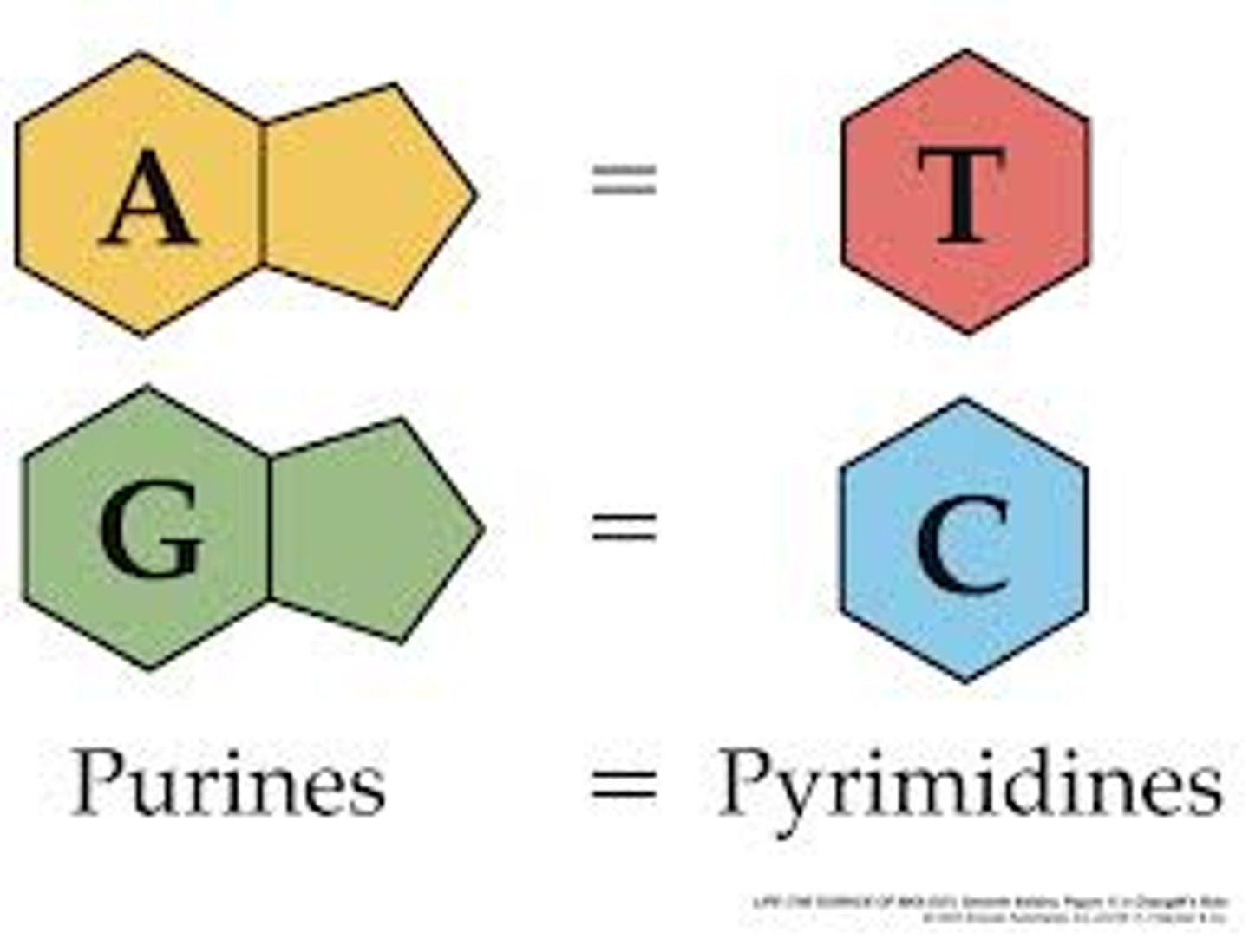
every nucleotide has a __ and __ 'end'
5', 3'
5'-carbon
extra carbon that is NOT part of the sugar ring; will always have a phosphate group
3'-carbon
part of the sugar ring, has a hydroxyl group on it; does NOT have a phosphate group
things are always added to the __ end
3'
structure of double-stranded DNA
both single-strand chains have 5' and 3' ends (5' has phosphate group, 3' does not); single strand chains are antiparallel, run in opposite directions (5' and 3' opposite across from each other); phosphate backbone on outside; nucleotides form hydrogen bonds
A=
G
C=
T
DNA base pairing
bases in DNA strands can only pair in 1 way; A always pairs with T, G always pairs with C
DNA sequence
the sequence of bases on one polynucleotide is complementary to the other polynucleotide; the genetic info that varies among species, individuals, versions of the same gene (bases determine transcripts + proteins that are made, what traits an organism has)
typically write DNA sequences in __ directionality
5' --> 3'
(ends are important, 2 structures with same sequence but different ends are not equivalent!!)
A-T and G-C are held together by __ bonds
hydrogen (not covalent bonds, easier to break)
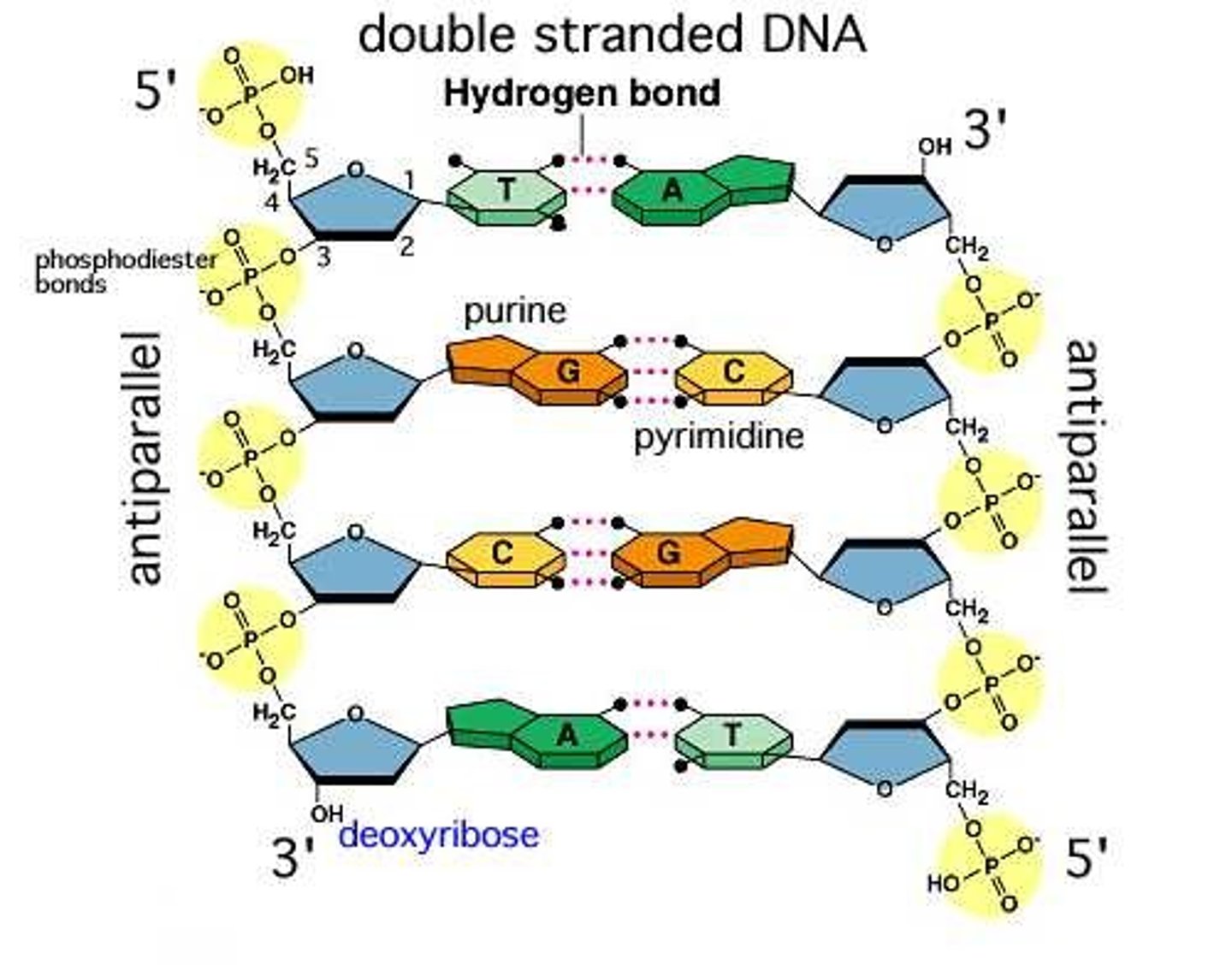
single stranded nucleotide chain is made of
phosphate-sugar COVALENT bonds form backbone (phosphate is very negatively charged)
2 single stranded nucleotide chains are __ (run in opposite directions) and coiled around each other
antiparallel
what model of DNA replication did Meselson and Stahl demonstrate with their experiment
semi-conservative model
details of Meselson and Stahl experiment
used nitrogen isotopes to label DNA and distinguish btw old and new isotopes; ultracentrifugation allowed for separation of DNA; started with 15N, added 14N so that any new DNA would be lighter colored
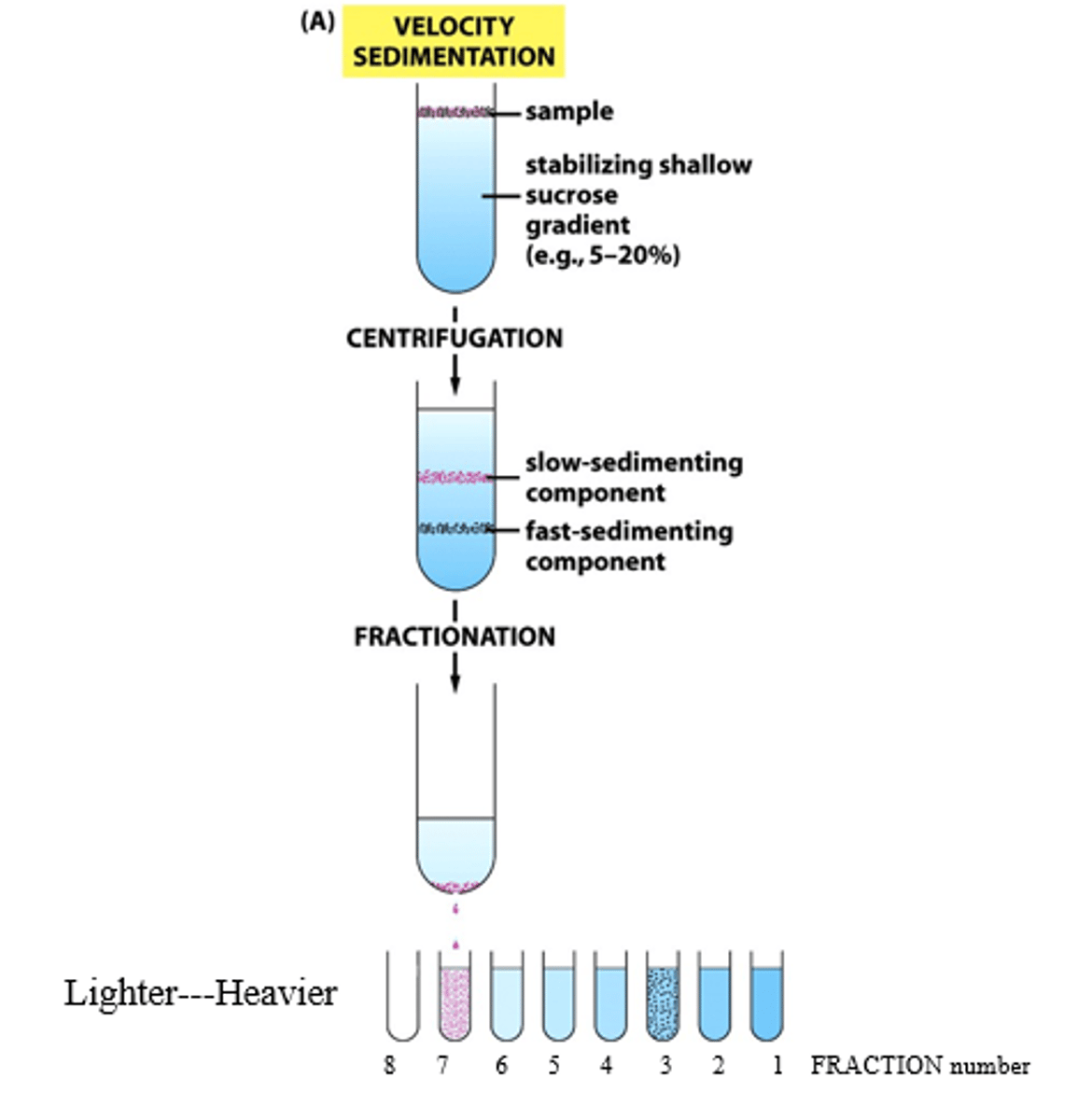
result of first generation DNA replication in Meselson and Stahl experiment
a band of color between the N14 and N15 places
- ruled out conservative model (if conservative, would have had original line and completely new strand that is all 14N --> wouldn't see intermediate band!)
second generation DNA replication in Meselson & Stahl experiment
50% N14 (new DNA strands) and 50% intermediate (half old, half new)
semi-conservative model
Type of DNA replication in which the replicated double helix consists of one old strand, derived from the old molecule, and one newly made strand.
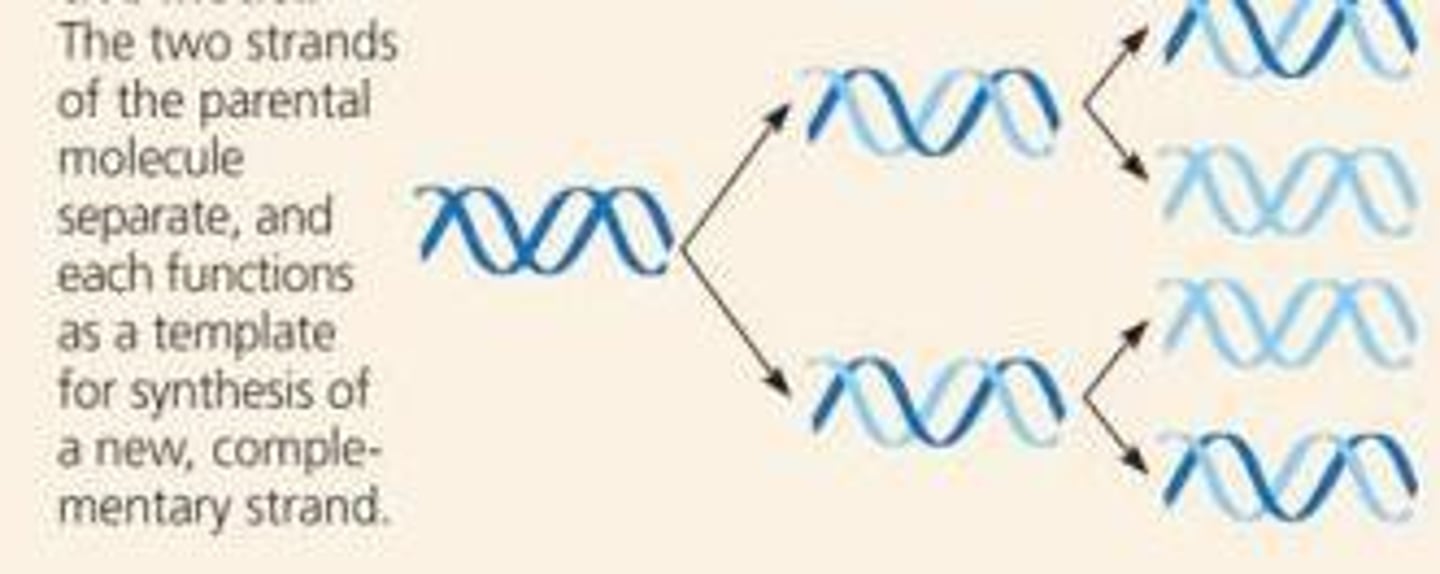
conservative model
Both parental strands stay together after DNA replication

dispersive model
each strand of both daughter molecules contains a mixture of old and newly synthesized DNA; each strand = mix of old and new
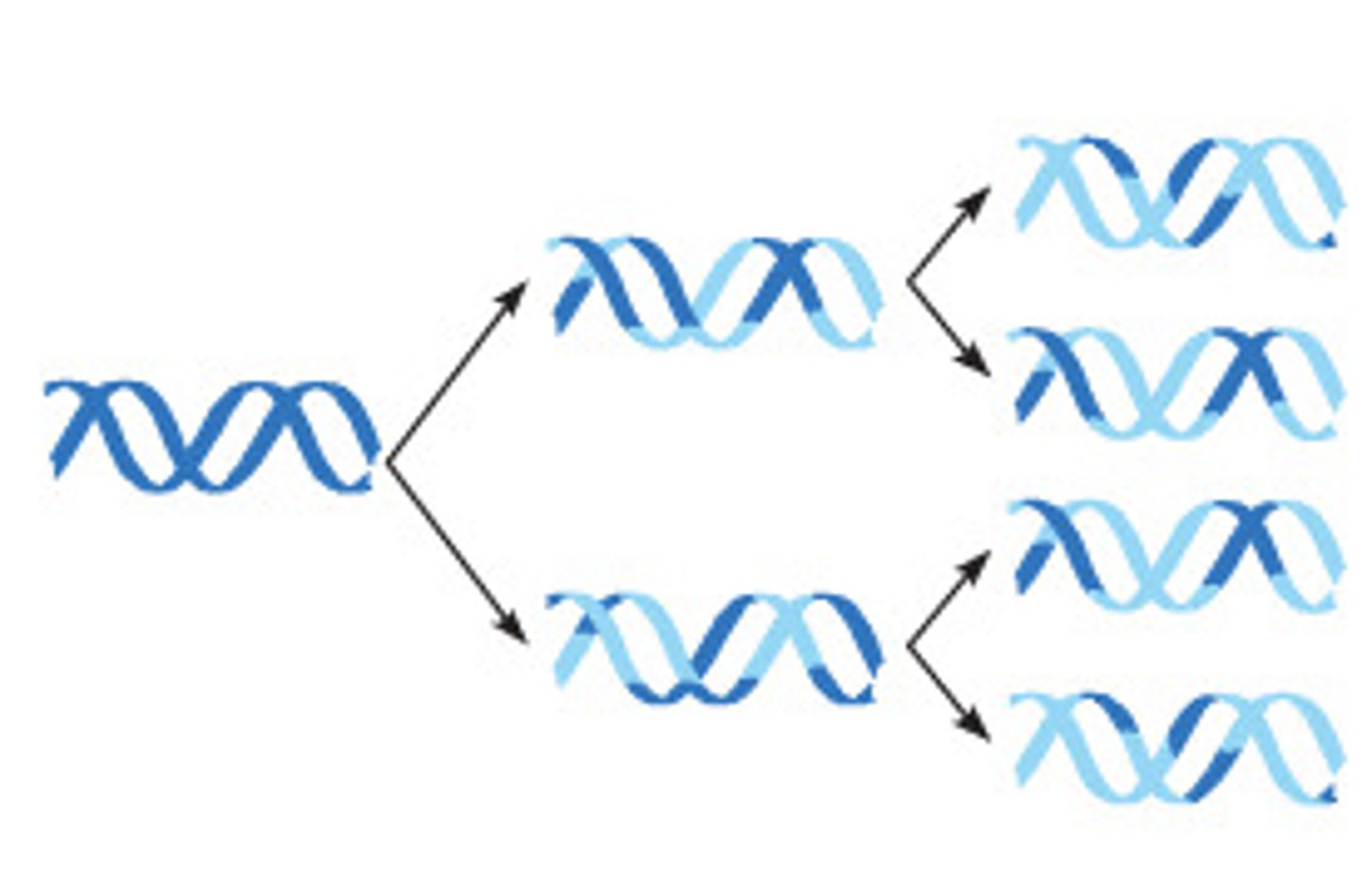
synthesis of new DNA strand only occurs in __ direction
5' --> 3'
with the addition of each new nucleotide in DNA replication, __ is made
new free 3' end (new nucelotides added onto free 3' CARBON)
6 key enzymes of DNA replication
helicase, single-stranded DNA binding protein, topoisomerase, DNA polymerase, DNA primase, DNA ligase
DNA helicase
unzips the hydrogen bonds between strands of DNA (btw bases; A-T, C-G) to open them for copying mechanism
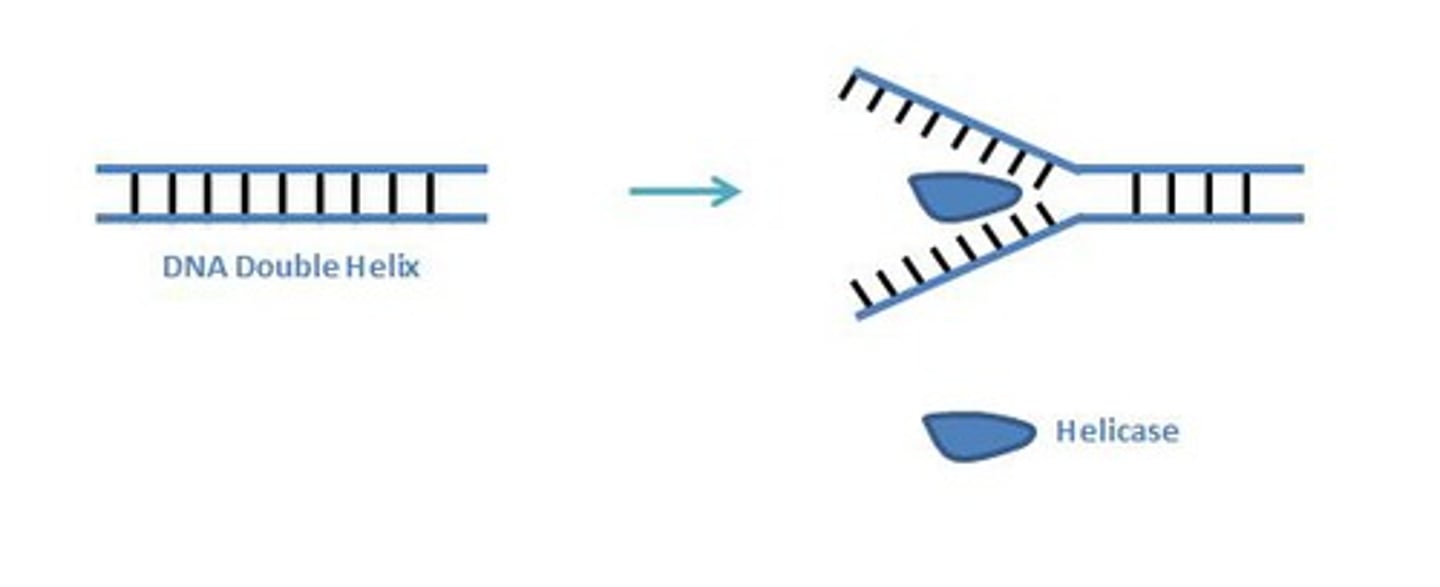
single-strand DNA binding proteins
coat DNA to prevent it from re-forming a double helix
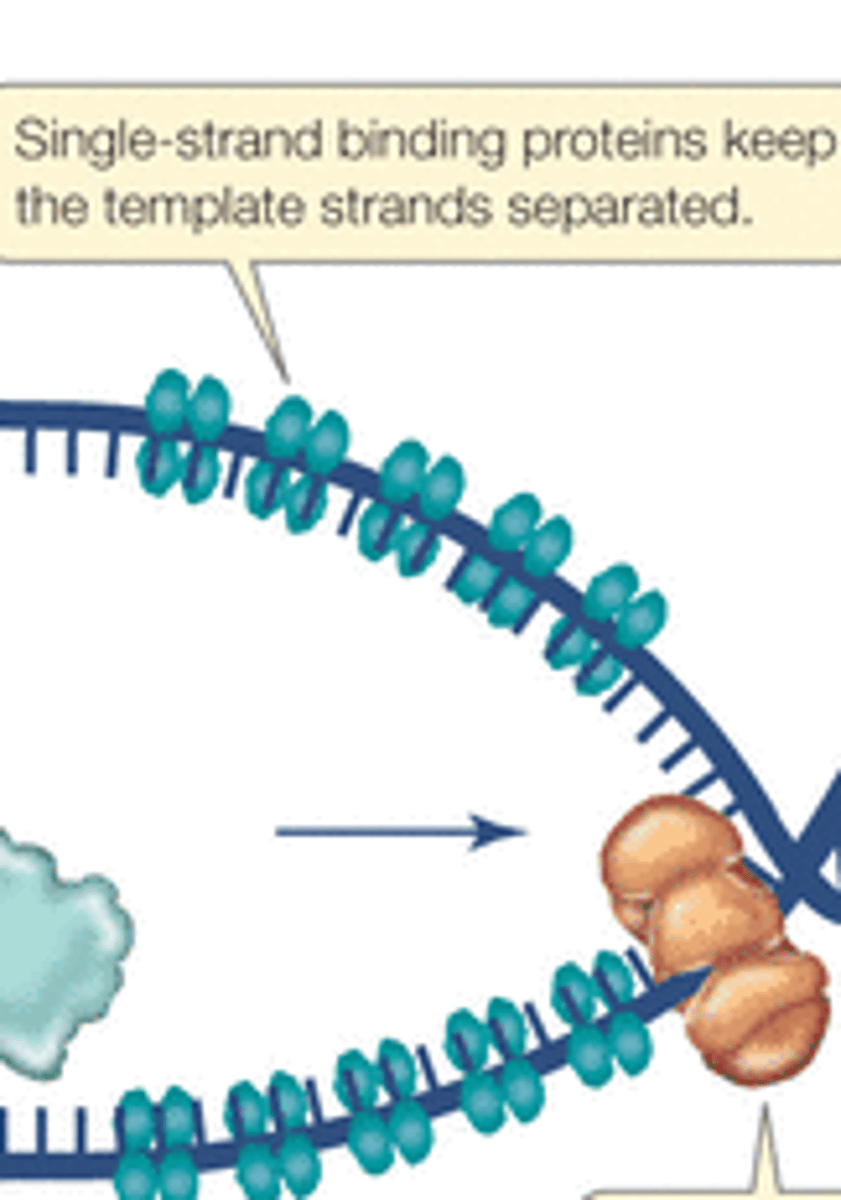
unwinding of DNA by helicase causes
tension; twisting/coiling (enzyme is needed to fix this)
DNA toposiomerase
relieves additional coiling ahead of replication fork; if not there, DNA will get so tight/wound up that helicase can't separate it
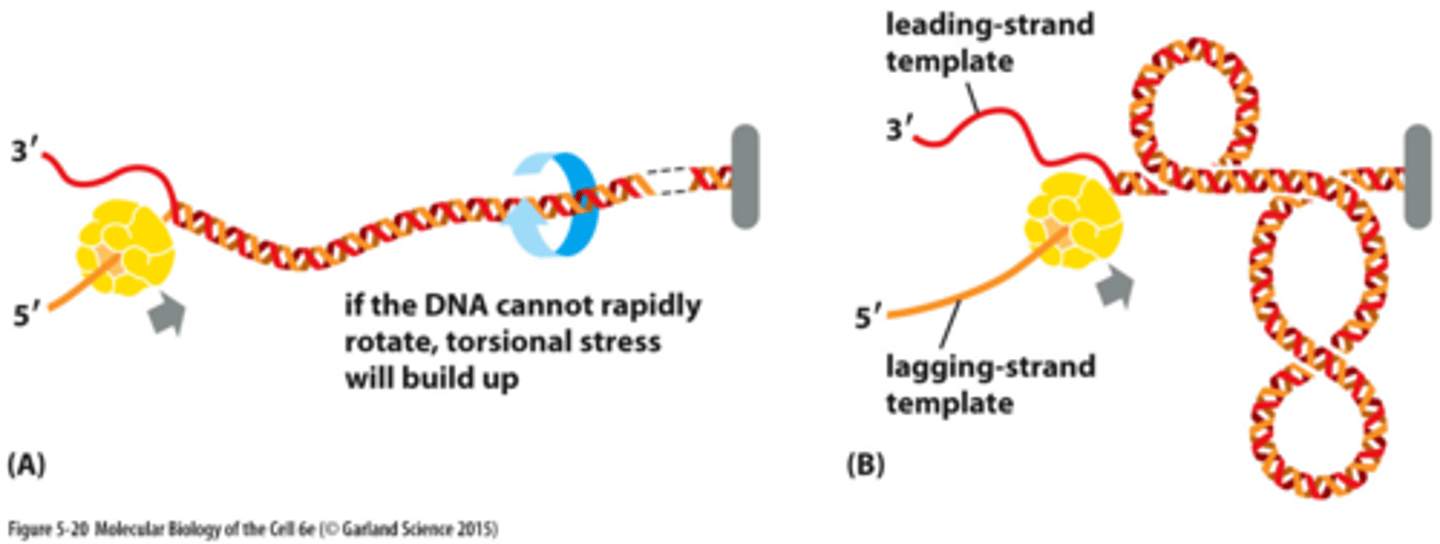
DNA polymerase
joins individual nucleotides to produce a DNA molecule; covalently bonds nucleotides to 3' end, generating new daughter cells
__ bonding controls base pairing
hydrogen (only A and T will match up, G and C will match up; big bases - small bases bc of rules of H bonding)
energy from converting DTPs to DMPs is used to
connect nucleotides
DNA primer is needed bc DNA polymerase needs a ___ sequence to bind before generating a new strand
double stranded
DNA primase makes the RNA primer so ___ can do its job
DNA polymerase (can only link nucleotides in the 5' to 3' direction, so RNA primer needed to contribute this 3' end ?)
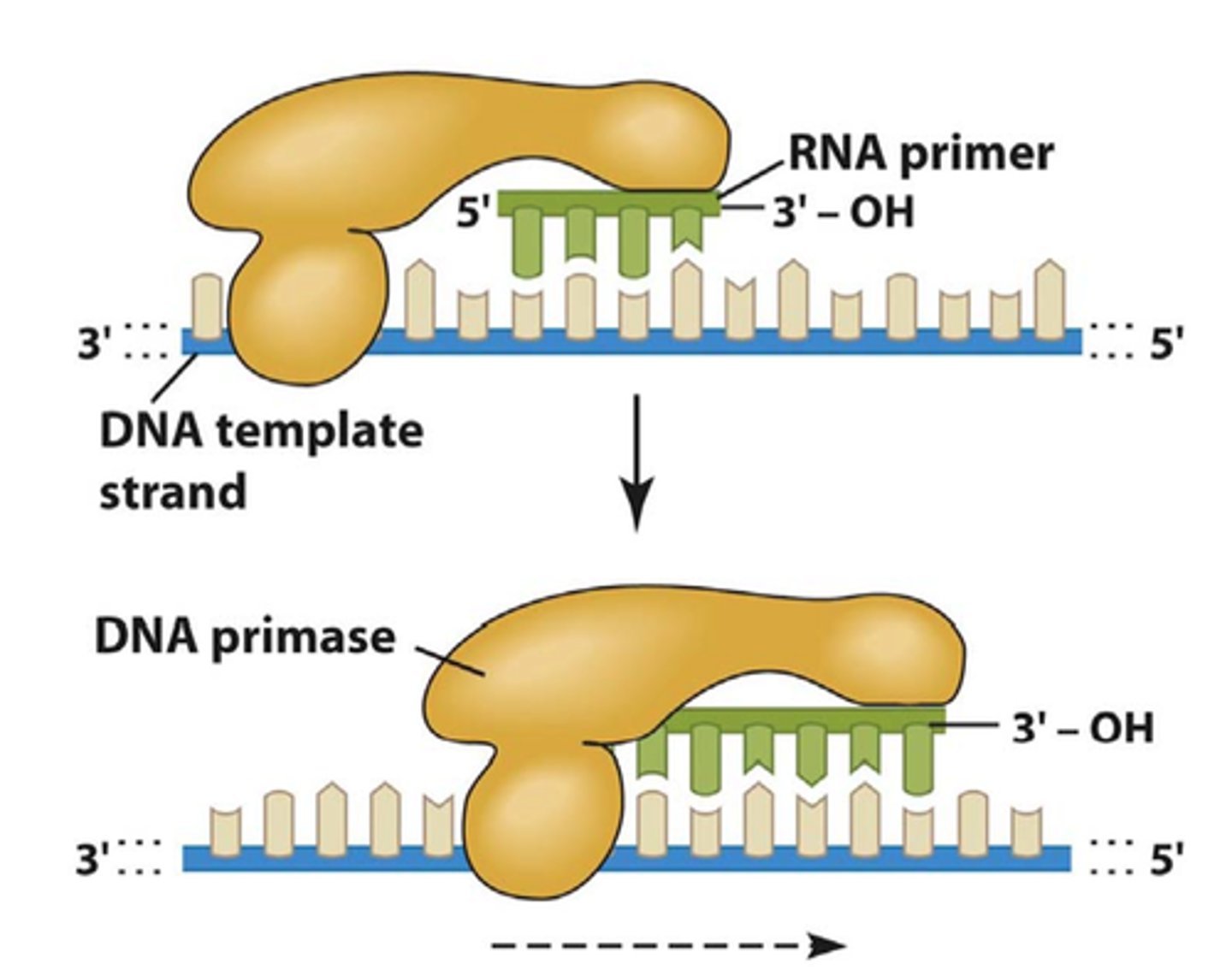
origin of replication
Site where the replication of a DNA molecule begins, consisting of a specific sequence of nucleotides.
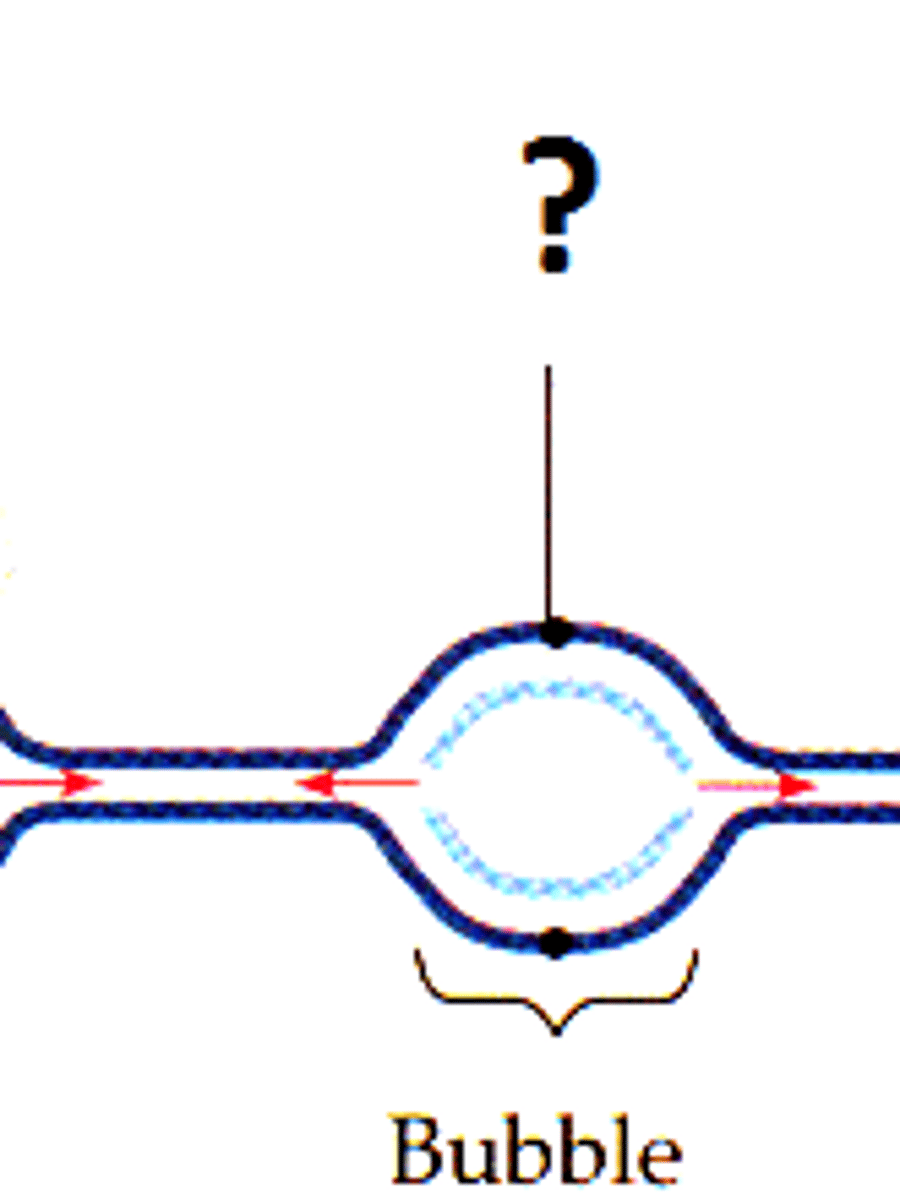
leading strand
synthesized continuously in 5' to 3' direction, toward replication fork; AKA 3' stand
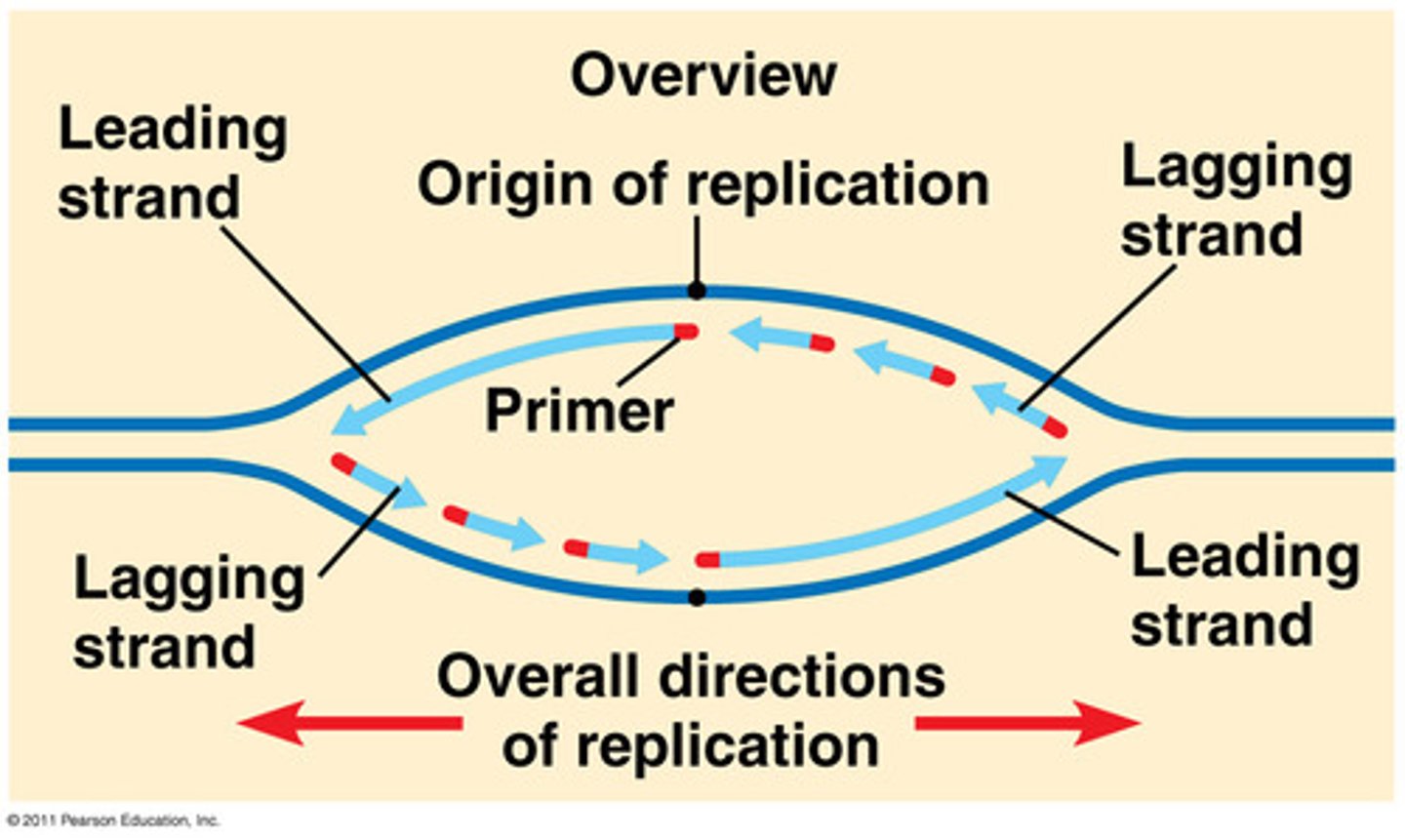
lagging strand
A discontinuously synthesized DNA strand that elongates by means of Okazaki fragments, each synthesized in a 5' to 3' direction away from the replication fork (synthesis still goes in 5' to 3' direction but has to wait for helix to open up); AKA 5' strand (orientation requires more complicated replication(
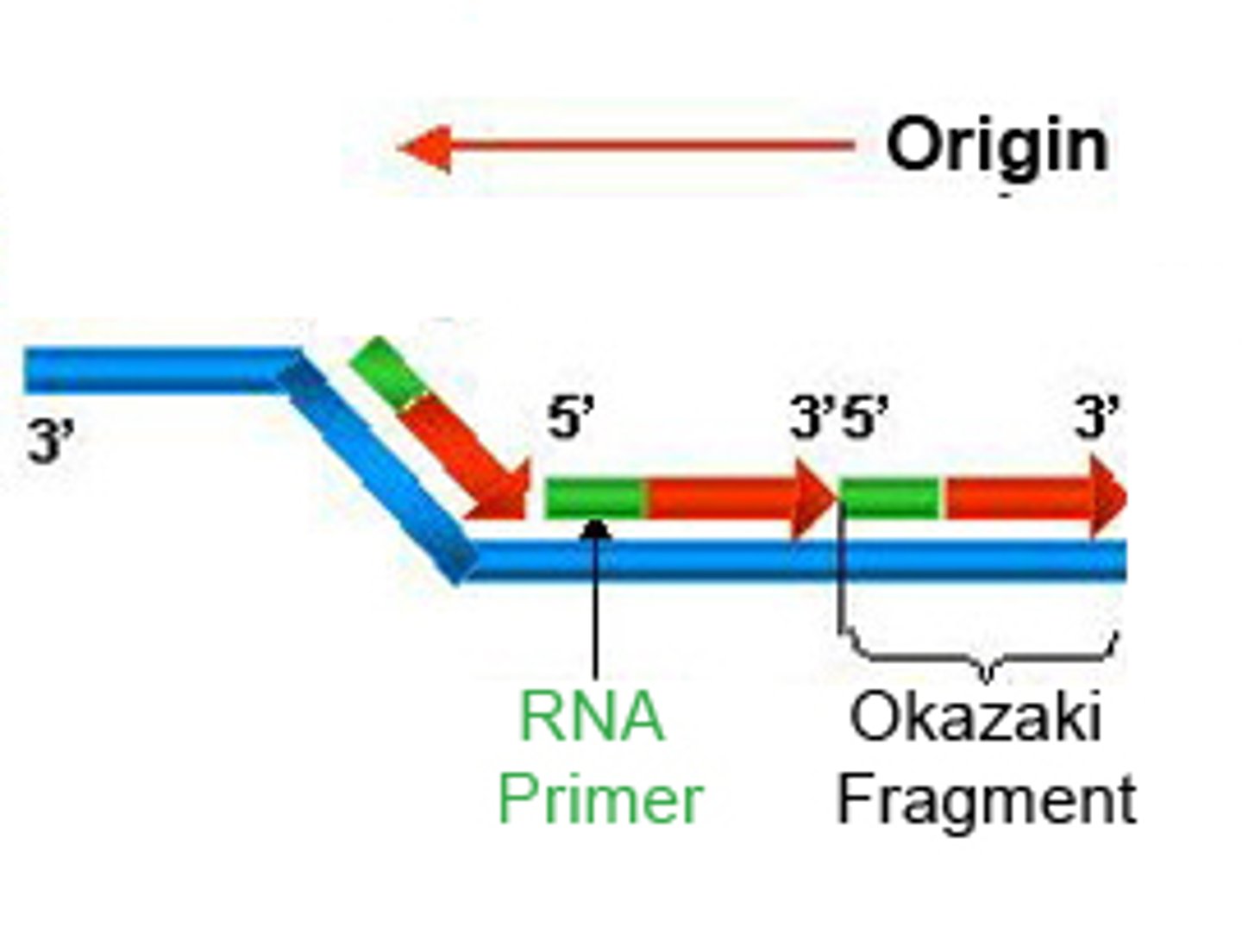
okazaki fragments
Small fragments of DNA produced on the lagging strand during DNA replication, joined later by DNA LIGASE to form a complete strand (DNA polymerase can't close this gap, ligase must do this)
steps in DNA replication
1. DNA primase makes RNA primers to begin the replication process
2. DNA polymerase makes DNA from RNA primers; primase hops back to opening of the fork and makes 2nd RNA primer for lagging strand
3. DNA polymerase elongates leading strand & synthesizes DNA from second primer
4. In lagging strand, DNA ligase forms covalent bond btw 1st and 2nd Okazaki fragments (closes bond); 3rd fragment is made
prokaryotes have __ chromosomes
circular
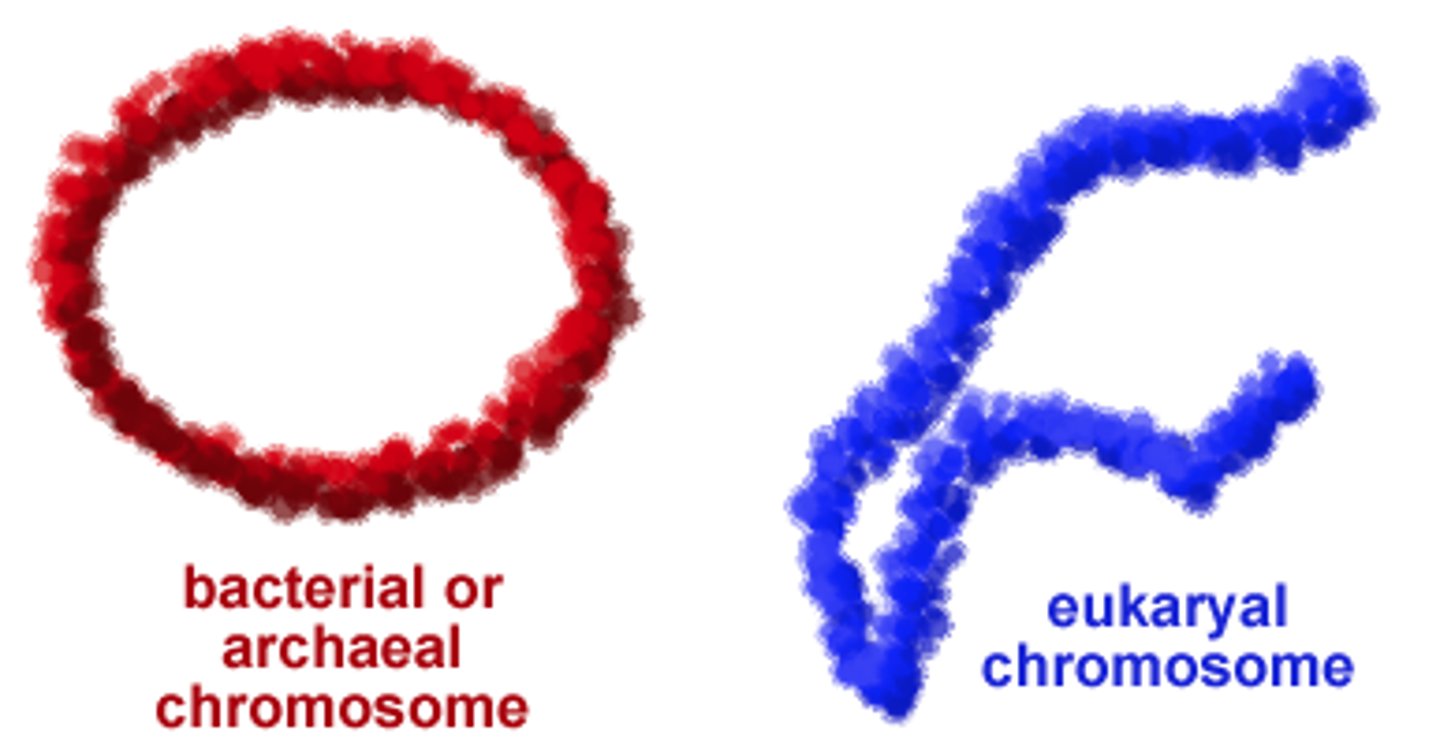
eukaryotes have __ chromosomes
linear
why DNA polymerase can not repair the 5' end gap created by removal of RNA after DNA synthesis
DNA polymerase can't go towards 5' end; need to overcome with telomeres
telomeres
repeated sequences at end of our chromosomes that like aglet (little thing at end of shoelaces) to prevent chromosome shortening; found at each end of the chromosome
telomerase
RNA-dependent DNA polymerase (reverse transcriptase) that is able to fill in the overhang and prevent chromosome shortening; can convert RNA to DNA
DNA polymerase can only synthesize nucleotides in 5' to 3' direction and only elongate
existing DNA strands (requires pre-existing RNA primer to start adding nucelotides to growing DNA chain); in comparison, telomeres can synthesize 6-nucleotide repeat sequences
function of telomeres
- Prevent ends of chromosomes form joining other ones.
- Prevent the ends of the chromosomes from breaking down.
- Protect the integrity of the genetic material/prevent loss of genes, allowing continual replication.
near the end of the telomere, primase makes an RNA primer, and DNA polymerase synthesizes a complementary strand in the 5' to 3' direction. __ is eventually removed
RNA primer (adding extra DNA allows complementary strand to be added; eventual removal causes gradual shortening of telomeres over time, with age)
older ppl generally have __ telomeres
shorter
what is unique about cancer cells
most cells can duplicate about 40x before they die because telomeres are so short; cancer cells seem to be able to duplicate indefinitely